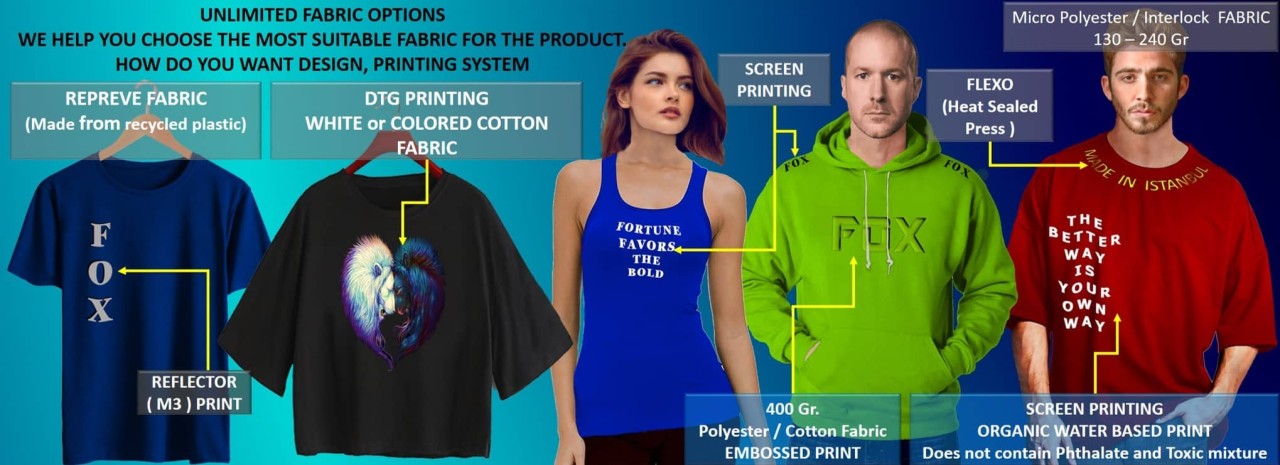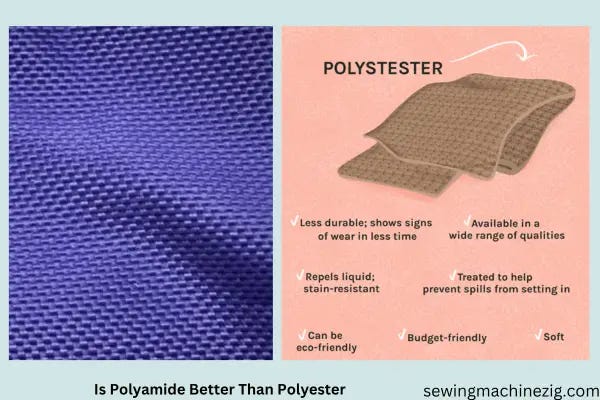Polyester and polyamide are two different types of synthetic fibers. Polyester is known for its durability, wrinkle resistance, and ability to retain color, while polyamide, also known as nylon, is praised for its strength, elasticity, and resistance to abrasion.

Credit: www.linkedin.com
Table of Contents
Polyester: Pros And Cons
Polyester is a popular synthetic fabric known for its versatility and durability. However, like any material, it has its own set of advantages and disadvantages. Understanding the pros and cons of polyester can help you make an informed decision when choosing clothing or other items made from this fabric.
Durability
Polyester fabric is highly durable, making it resistant to stretching, shrinking, and wrinkles. This quality ensures that clothing made from polyester retains its shape and appearance over time, even after repeated washes.
Moisture Resistance
Polyester is known for its excellent moisture-wicking properties, making it a great choice for activewear and outdoor clothing. It repels moisture, keeping the wearer dry and comfortable during physical activities or in humid conditions.
Breathability
One of the drawbacks of polyester is its limited breathability. While it effectively wicks away moisture, it may not allow for optimal air circulation, which can lead to discomfort in hot and humid environments.

Credit: medium.com
Polyamide: Pros And Cons
When it comes to synthetic fabrics, polyamide is a popular choice due to its many advantages. However, it also has its drawbacks. In this section, we will explore the pros and cons of polyamide, helping you make an informed decision when choosing the right fabric for your needs.
Softness
Polyamide fabrics are known for their exceptional softness, making them a comfortable option for clothing and other textile applications. The fibers have a smooth texture that feels gentle against the skin, ensuring a pleasant wearing experience.
Stretch
One of the major advantages of polyamide is its excellent stretchability. The fabric can be stretched without losing its shape or elasticity, providing a flexible and form-fitting fit. This makes polyamide a popular choice for activewear, swimwear, and other garments that require freedom of movement.
Abrasion Resistance
Polyamide fabrics are highly resistant to abrasion, meaning they can withstand frequent wear and tear without showing signs of damage. This durability makes polyamide ideal for products that undergo heavy use, such as backpacks, upholstery, and outdoor gear.
Moreover, polyamide fabrics are also resistant to pilling, which is the formation of small balls of fiber on the surface of the fabric over time. This ensures that the fabric maintains its smooth and attractive appearance even after prolonged use.
Comparison Of Polyester And Polyamide
When it comes to choosing fabrics for clothing, Polyester and Polyamide are popular choices. Both fabrics offer unique properties and are widely used in the fashion industry. In this article, we will compare Polyester and Polyamide under the headings of Comfort, Environmental Impact, and Cost, to help you make an informed decision when choosing between the two fabrics.
Comfort
Polyester is known for its durability, strength, and resistance to shrinking and wrinkles. It is a synthetic fabric that is often used in sportswear and outdoor clothing due to its moisture-wicking properties. However, polyester is not as breathable as other fabrics and can cause discomfort when worn for long periods. On the other hand, Polyamide, also known as Nylon, is a lightweight fabric that is breathable and comfortable to wear. It is often used in hosiery, lingerie, and swimwear due to its stretchy and quick-drying properties.
Environmental Impact
When it comes to the environmental impact, Polyamide is considered to be a more eco-friendly option than Polyester. Polyester is made from petroleum-based products, which are non-renewable and have a significant impact on the environment. On the other hand, Polyamide is made from renewable sources such as castor oil and is recyclable. However, the production process of Polyamide requires a lot of energy and emits greenhouse gases, making it less environmentally friendly than natural fabrics such as cotton or linen.
Cost
Cost is an important factor to consider when choosing between Polyester and Polyamide. Polyester is a cheaper option than Polyamide, making it a popular choice for mass-produced clothing and sportswear. Polyamide, on the other hand, is more expensive due to its durability and unique properties. However, the long-lasting nature of Polyamide makes it a worthwhile investment for high-quality clothing and outdoor gear.
In conclusion, both Polyester and Polyamide offer unique properties and are widely used in the fashion industry. When choosing between the two, it’s important to consider factors such as comfort, environmental impact, and cost to make an informed decision.
Polyester And Polyamide In The Fashion Industry
Polyester and polyamide are two commonly used synthetic fibers in the fashion industry, each with its own unique properties and applications. Understanding the differences between these materials is crucial for fashion designers and manufacturers to create high-quality and innovative products that meet the demands of today’s consumers.
Trends
When it comes to fashion trends, both polyester and polyamide are versatile materials that have been embraced by designers and consumers alike. Polyester has seen a resurgence in popularity due to its durability, wrinkle resistance, and ability to hold vibrant colors, making it a go-to choice for activewear, athleisure, and sustainable fashion. On the other hand, polyamide, also known as nylon, has gained traction in the fashion industry for its lightweight, breathable, and quick-drying properties, making it ideal for sportswear, lingerie, and hosiery.
Applications
Polyester is widely used in the fashion industry for a range of applications, including clothing, accessories, and footwear. Its ability to blend seamlessly with other fibers such as cotton and wool makes it a popular choice for creating durable and easy-care garments. Polyamide, on the other hand, is favored for its strength and elasticity, making it suitable for applications such as swimwear, outdoor gear, and intimate apparel. Additionally, both materials are commonly used in the production of sustainable and eco-friendly fashion products, aligning with the growing demand for environmentally conscious clothing.
Polyester And Polyamide In The Sports Industry
Polyester and Polyamide, commonly known as Nylon, are two of the most widely used synthetic fibers in the textile industry. They are often used interchangeably due to their similarities, but each has unique properties that make them suitable for different applications. In the sports industry, both Polyester and Polyamide are used extensively in the manufacturing of sportswear, athletic gear, and equipment due to their durability, moisture-wicking properties, and ability to keep athletes comfortable during intense physical activity.
Athletic Performance
Athletic performance is a crucial factor in the design and production of sportswear and equipment. Polyester and Polyamide are both known for their ability to wick moisture away from the skin, keeping athletes dry and comfortable during intense physical activity. However, Polyester is more hydrophobic than Polyamide, meaning it repels water and dries quicker, making it the preferred choice for sports that involve a lot of water or sweat, such as swimming, running, and cycling.
Durability
When it comes to durability, Polyester and Polyamide are both known for their strength and resistance to wear and tear. However, Polyester is more resistant to UV rays, making it less likely to fade or degrade over time, while Polyamide is more resistant to abrasions and tears, making it the preferred choice for sports that involve a lot of physical contact, such as football, hockey, and martial arts.
Conclusion
In conclusion, Polyester and Polyamide are both excellent choices for sportswear and equipment, and their unique properties make them suitable for different applications. Whether you’re a swimmer, runner, cyclist, football player, or martial artist, there is a Polyester or Polyamide product that will meet your needs and help you perform at your best.

Credit: m.youtube.com
Polyester And Polyamide In The Home
When it comes to choosing materials for our homes, polyester and polyamide are two popular options. They both offer a range of benefits and can be found in various household items. Let’s take a closer look at how these materials are used in furniture and bedding.
Furniture
Polyester and polyamide are commonly used in the manufacturing of furniture due to their durability and resistance to wear and tear. They are often blended with other materials like cotton or leather to create furniture that is both comfortable and long-lasting.
One of the advantages of polyester in furniture is its ability to resist stains and fading. This makes it an excellent choice for upholstery, especially in households with children or pets. Polyester also offers good resistance to wrinkles, making it a low-maintenance option for furniture that retains its shape and appearance over time.
On the other hand, polyamide is known for its strength and resilience. It is often used in furniture that requires extra support, such as chair frames or sofa springs. Polyamide is also resistant to abrasion, making it suitable for furniture that is subjected to heavy use.
Overall, both polyester and polyamide offer excellent options for furniture in terms of durability, stain resistance, and appearance.
Bedding
When it comes to bedding, polyester and polyamide are popular choices due to their softness, breathability, and easy maintenance.
Polyester bedding is known for its affordability and versatility. It is often used in comforters, duvet covers, and sheets, providing a soft and comfortable sleeping surface. Polyester is also hypoallergenic, making it a suitable option for those with allergies or sensitivities.
Polyamide bedding, on the other hand, is valued for its moisture-wicking properties. It helps to regulate body temperature, keeping you cool and dry throughout the night. Polyamide is also known for its durability, ensuring that your bedding will withstand regular washing and use.
Whether you choose polyester or polyamide bedding, you can rest assured that both materials offer comfort and quality for a good night’s sleep.
Frequently Asked Questions
Which Is More Expensive Polyester Or Polyamide?
Polyamide is generally more expensive than polyester due to its higher performance and durability. However, the cost can vary depending on the specific brand and quality of the materials.
Is Polyamide Or Polyester More Waterproof?
Polyamide is more waterproof than polyester.
What Are The Disadvantages Of Polyamide Fabric?
Polyamide fabric has a few drawbacks. It tends to retain heat and can be uncomfortable in hot weather. It is also prone to static electricity and can cling to the body. Additionally, it may not be as durable as other fabrics and can pill or snag easily.
Does Polyamide Make You Sweat?
Yes, polyamide can make you sweat as it is not very breathable and can trap heat.
Conclusion
Both polyester and polyamide have their own unique advantages and applications. Understanding the differences and properties of each can help you make informed decisions when choosing materials for your products. Whether it’s durability or moisture-wicking properties you’re after, both polyester and polyamide offer versatile options for various industries and uses.
